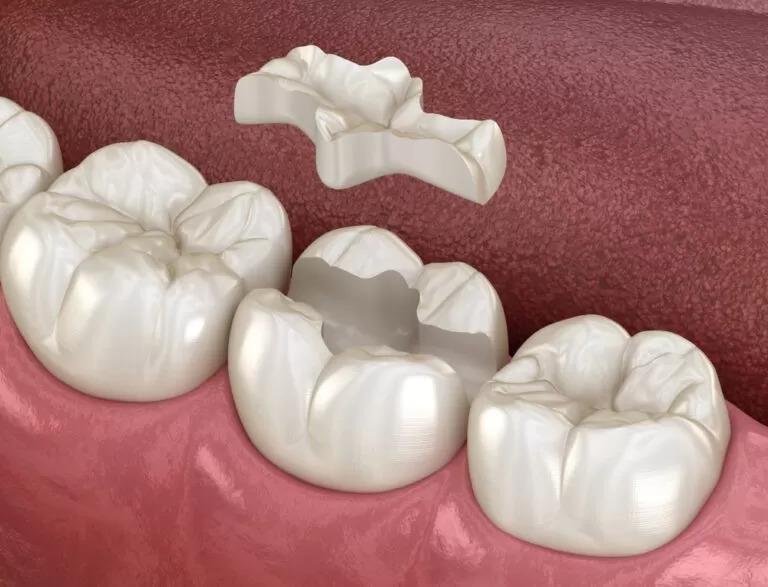
You shouldn’t be afraid to show off your smile, and if you’re feeling self-conscious about your pearly whites, there are multiple options for restorative treatments to help you smile with confidence. Restorative dentistry can be both corrective and preventative, and with the proper treatment, your pearly whites will look and feel brand new.
There are six options for restorative dentistry, and you can see your dentist to discuss which treatment would be best for you.
1. Dental Fillings

Dental fillings are one of the more common options for restorative dental treatment. Fillings—also known as composites, amalgams, or restorations—are crafted with a combination of metals or resins to fill in parts of your teeth that have weakened, decayed, or been removed after cavity treatment. Fillings assist in restoring the stability of the tooth and help prevent any future damage.
If your dentist sees discoloration or damage on one or more of your teeth during a routine exam, they may recommend a filling. In some cases, they may want to take an x-ray to see the extent of the damage.
2. Crowns

If the damage is too extensive for a filling, dentists will install a crown to protect and restore the tooth. Crowns can be made with resin, porcelain (ceramic), or metal and are placed over the teeth and cemented into place to cover the original tooth. Crowns are relatively easy to take care of because they require regular oral hygiene. Plus, they often blend in with the other teeth.
Crowns are typically used on damaged, broken, worn down, or misshapen teeth and often take more than one visit to the dentist to get the crown situated. The dentist will use x-rays to see if a root canal is needed, and once the tooth is ready, the crown is placed on the tooth.
3. Onlays

Dental onlays are more protective than fillings but cover less area than a crown. Because there are restrictions with the composite material used in fillings, they have a shorter lifespan than onlays. Onlays cover the affected area instead of the entire tooth like a crown. Onlays generally take two visits; one to clean the tooth and prepare the onlay, and the second to install the onlay.
4. Traditional Fixed Bridges

Traditional fixed bridges are the most common type of bridges. Dentists will install traditional fixed bridges to replace missing teeth using the healthy teeth next to the open space. These bridges are often made out of porcelain and fused to metal or ceramic. Before installing the bridge, the dentist will reshape the supporting teeth and fit them for crowns to make them strong enough to hold the bridge in place. Another bridge option is an implant-supported bridge.
5. Dentures

Dentists will recommend dentures if a person needs several teeth replaced. Many modern denture applications are incredibly comfortable and function as well as regular teeth, and they are crafted from multiple materials and serve different purposes.
Full (or complete) dentures can be made in both upper or lower sets and use suction and denture adhesive to stay in place. Partial dentures fill in smaller gaps of missing teeth to prevent the rest of your teeth from shifting and keep your facial muscles and jawbone engaged.
6. Dental Implants

Dental implants replace missing teeth using titanium fixtures that can fuse with the jawbone over time to secure the implant. Implants are one of the most effective long-term restorative treatments available because they replace the entire root of the tooth. People can get dental implants for a single tooth, multiple teeth, or complete replacements.
At Texas Periodontal Associates, we can help discuss your options for restorative dental treatment and get your glowing smile back. We specialize in all six procedures discussed here, and we guarantee a smooth, comfortable process. Call us at 713-457-6351 or fill out our online form to schedule your appointment. We look forward to seeing you!

